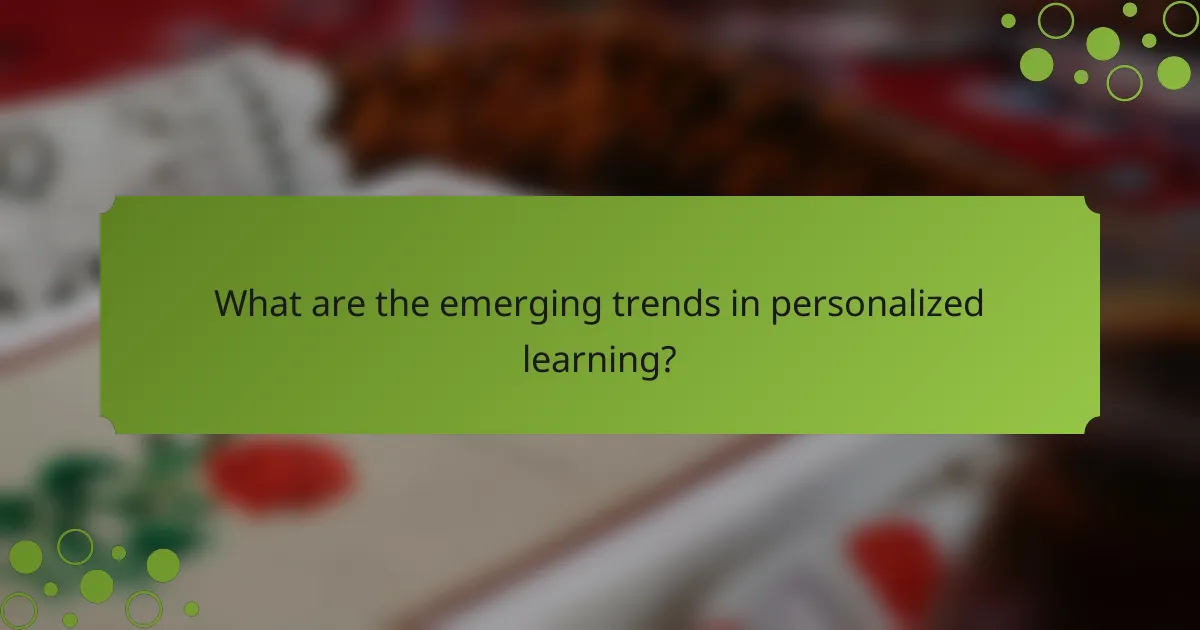
Understanding your unique learning style is essential for maximizing your educational experience. By identifying whether you are a visual, auditory, or kinesthetic learner, you can customize your study methods and utilize diverse resources that align with your preferences. This tailored approach not only enhances your understanding and retention of material but also makes learning more engaging and effective.

How can I identify my learning style?
Identifying your learning style involves understanding how you best absorb and process information. By recognizing whether you are a visual, auditory, or kinesthetic learner, you can tailor your study methods to enhance your learning experience.
Visual learning style
Visual learners grasp information best through images, diagrams, and charts. They often benefit from color-coded notes, infographics, and visual aids that help illustrate concepts. Using tools like mind maps can also enhance retention for these learners.
To optimize your study sessions, incorporate videos and slideshows into your learning routine. Try to visualize information by drawing or sketching out ideas, which can reinforce your understanding of the material.
Auditory learning style
Auditory learners excel when they hear information, making lectures, discussions, and audio recordings effective study methods. They often remember details better when they listen to explanations or engage in conversations about the topic.
To support this learning style, consider joining study groups or using podcasts and audiobooks. Reading aloud or discussing topics with peers can also enhance comprehension and retention for auditory learners.
Kinesthetic learning style
Kinesthetic learners prefer hands-on experiences and learn best through movement and physical activities. They often thrive in environments where they can engage in experiments, simulations, or role-playing scenarios.
To cater to this style, incorporate activities like building models or conducting experiments into your study sessions. Taking frequent breaks to move around can also help maintain focus and energy levels during learning tasks.
Assessments for learning styles
Various assessments can help identify your learning style, including questionnaires and quizzes designed to evaluate your preferences. These tools often ask about your study habits and preferences in different situations.
Look for reputable assessments online or through educational institutions. While these tools can provide insights, remember that learning styles can be fluid, and you may benefit from a mix of approaches.
Benefits of knowing your learning style
Understanding your learning style can significantly enhance your educational experience. It allows you to customize your study methods, making learning more efficient and enjoyable. Tailoring your approach can lead to better retention and understanding of the material.
Additionally, knowing your learning style can help you communicate your needs to educators or peers, fostering a more supportive learning environment. This awareness can also encourage you to explore new strategies that may complement your primary learning style, broadening your overall skill set.

What study methods work best for different learning styles?
Different learning styles require tailored study methods to enhance understanding and retention. Visual, auditory, and kinesthetic learners benefit from specific techniques that align with their preferences, making learning more effective and engaging.
Techniques for visual learners
Visual learners grasp information better through images, diagrams, and written notes. Utilizing tools like mind maps, charts, and color-coded notes can significantly enhance their comprehension. For instance, creating infographics or using flashcards with visuals can help reinforce key concepts.
Incorporating videos and presentations into study sessions can also be beneficial. Visual learners should consider using platforms like YouTube or educational websites that offer visual content to complement their reading materials.
Techniques for auditory learners
Auditory learners thrive on listening and verbal communication. They can enhance their study sessions by engaging in discussions, listening to lectures, or using audio recordings of study materials. Joining study groups or participating in class discussions can also reinforce their learning through dialogue.
To further support auditory learning, using tools like podcasts or audiobooks can provide alternative ways to absorb information. Repeating information aloud or teaching concepts to others can solidify their understanding.
Techniques for kinesthetic learners
Kinesthetic learners excel when they can engage physically with the material. Hands-on activities, such as experiments or role-playing, can help them grasp concepts more effectively. Incorporating movement into study sessions, like walking while reviewing notes, can also enhance focus and retention.
Using models or simulations can provide practical experience that kinesthetic learners crave. They should seek out opportunities for interactive learning, such as workshops or labs, to fully engage with the subject matter.

How can I customize my study methods?
Customizing your study methods involves identifying your personal learning preferences and adapting techniques that enhance your understanding and retention of material. By tailoring your approach, you can improve focus and efficiency in your studies.
Creating a personalized study plan
To create a personalized study plan, start by assessing your learning style—whether you are a visual, auditory, or kinesthetic learner. This assessment will guide you in selecting appropriate study techniques, such as using diagrams for visual learners or discussing topics aloud for auditory learners.
Set specific, achievable goals for each study session, and allocate time blocks that suit your concentration levels. For instance, you might study in 25-minute intervals followed by a 5-minute break, known as the Pomodoro Technique, which can enhance focus and retention.
Incorporating technology in study methods
Technology can significantly enhance your study methods by providing diverse resources and tools. Consider using educational apps that align with your learning style, such as flashcard apps for memorization or note-taking software for organizing information.
Online platforms also offer access to a wide range of courses and tutorials, allowing you to learn at your own pace. Be mindful to balance screen time with traditional study methods to avoid digital fatigue.
Adjusting study environments
Your study environment plays a crucial role in your ability to concentrate and absorb information. Identify a space that minimizes distractions, whether it’s a quiet room at home or a library. Ensure that the area is well-lit and comfortable to promote focus.
Experiment with different settings to find what works best for you. Some learners thrive in complete silence, while others may benefit from background music or ambient noise. Adjusting your environment can lead to more productive study sessions and better outcomes.

What diverse resources can enhance learning?
Diverse resources can significantly enhance learning by catering to different learning styles. Utilizing a mix of visual, auditory, and kinesthetic materials can help individuals grasp concepts more effectively and retain information longer.
Online courses for visual learners
Online courses are ideal for visual learners who benefit from seeing information presented graphically. Platforms like Coursera and Udemy offer courses with video lectures, infographics, and slides that can make complex topics easier to understand.
When selecting an online course, look for those that include visual aids such as charts, diagrams, and animations. These elements can help reinforce learning and improve retention.
Podcasts and audiobooks for auditory learners
Auditory learners thrive on listening, making podcasts and audiobooks excellent resources. Platforms like Audible and Spotify provide a wide range of educational content that can be consumed while commuting or exercising.
To maximize learning, choose podcasts or audiobooks that feature discussions, interviews, or storytelling formats. This approach can help auditory learners engage with the material and absorb information more effectively.
Hands-on activities for kinesthetic learners
Kinesthetic learners excel through hands-on activities that allow them to engage physically with the material. Practical exercises, experiments, and simulations can provide valuable experiences that reinforce theoretical knowledge.
Consider incorporating activities such as building models, conducting experiments, or participating in workshops. These experiences can deepen understanding and make learning more enjoyable for kinesthetic learners.

What frameworks can help in adapting learning styles?
Several frameworks can assist in adapting learning styles by providing structured approaches to identify personal preferences and customize study methods. These frameworks often include assessments and feedback mechanisms that help learners understand their unique styles and optimize their learning experiences.
Learning style assessment tools
Learning style assessment tools help individuals identify their preferred ways of absorbing information. Common tools include the VARK questionnaire, which categorizes learners into Visual, Auditory, Reading/Writing, and Kinesthetic styles, and the Myers-Briggs Type Indicator (MBTI), which offers insights into personality-based learning preferences.
When using these tools, consider taking multiple assessments to gain a comprehensive understanding of your learning style. Many assessments are available online for free or at a low cost, making them accessible for most learners.
Feedback mechanisms for study methods
Feedback mechanisms are essential for refining study methods based on individual learning styles. Regular self-reflection and peer feedback can help identify what study techniques are most effective. For example, if a learner finds that visual aids enhance retention, they should incorporate more diagrams or charts into their study routine.
To implement effective feedback mechanisms, set specific goals for your study sessions and evaluate your progress regularly. Consider keeping a study journal to track what strategies work best and adjust your methods accordingly. This iterative process can significantly enhance learning outcomes.

What are the emerging trends in personalized learning?
Emerging trends in personalized learning focus on tailoring educational experiences to meet individual student needs and preferences. This approach enhances engagement and effectiveness by utilizing technology and innovative teaching methods.
Adaptive learning technologies
Adaptive learning technologies adjust the educational content based on a student’s performance and learning pace. These systems analyze data to provide personalized pathways, ensuring that learners receive the right level of challenge and support.
For example, platforms like DreamBox and Smart Sparrow adapt math and science lessons in real-time, allowing students to master concepts before moving on. This can lead to improved retention and understanding, as learners are not left behind or overwhelmed.
Integration of AI in education
The integration of artificial intelligence (AI) in education is transforming how personalized learning is delivered. AI tools can analyze vast amounts of data to identify learning patterns and suggest customized resources and strategies for each student.
For instance, AI-driven tutoring systems can provide instant feedback and tailored exercises, which can significantly enhance learning outcomes. However, educators should be aware of the potential for over-reliance on technology and ensure that human interaction remains a key component of the learning process.


